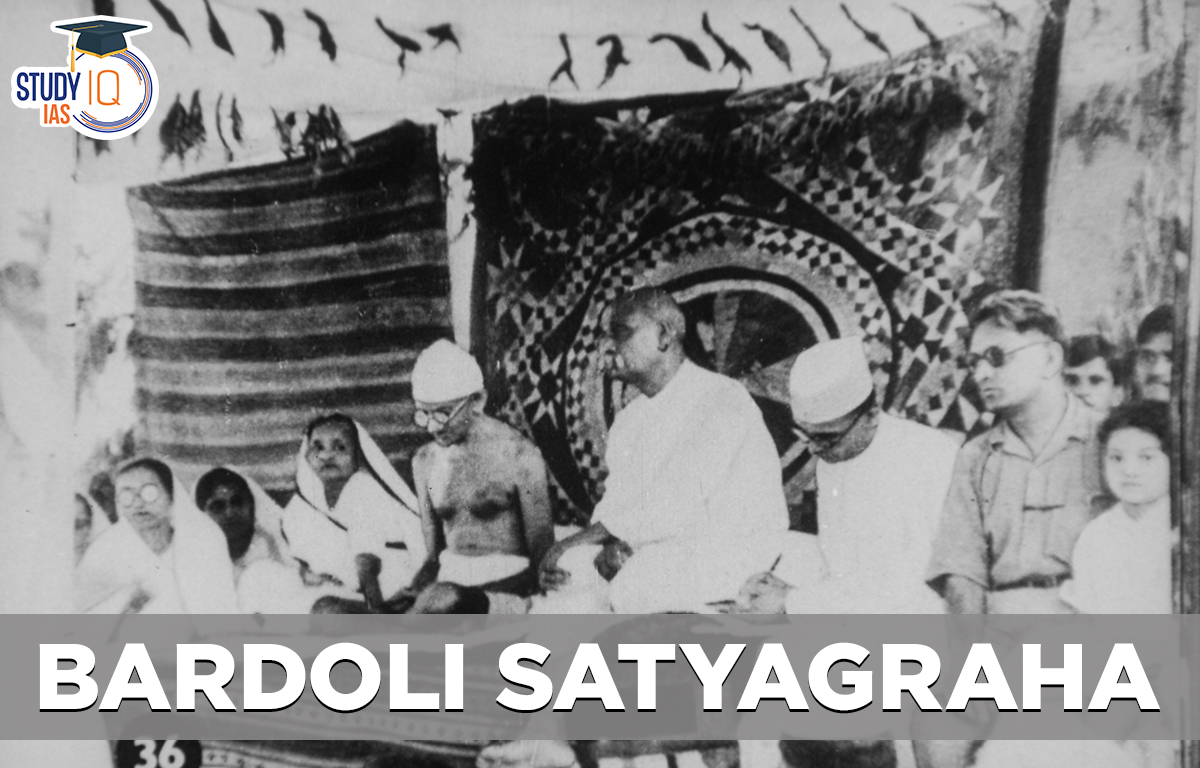Table of Contents
Bardoli Satyagraha
Bardoli Satyagraha organized Sardar Vallabhai Patel in 1928 to defend the Bardoli peasants against arbitrary tax increases during the Indian Independence War. A peaceful uprising against British rule in India was attempted by Indian peasants during the Bardoli Satyagraha.
The Civil Disobedience Movement, a part of the Indian Independence War, was a crucial turning point. The Bardoli Satyagraha is comprehensively covered in this article, which will be helpful for other competitive exams like the UPSC.
Bardoli Satyagraha History
Floods and famine struck the Bardoli Taluk in present-day Gujarat in 1925, negatively affecting crop productivity. The farmers were financially impacted by this. The Bombay Presidency raised tax rates by 22% while oblivious to the plight of the farmers. Despite requests and pleas from farmers and civic organizations to reconsider this unfair tax rate increase in light of the dire situation, the administration opted to proceed with tax collection.
A report demonstrating that the farmers could not bear the load of the increased assessment was produced in 1927 by the neighbourhood Congress Party. But the authorities stood their ground. Farmers in Bardoli invited Vallabhai Patel to start the protest action in January 1928, when they unanimously decided not to pay taxes. Additionally, they assured Gandhi of their dedication to nonviolence.
Only after receiving guarantees from the farmers of their commitment to the movement did Patel agree to assume the leadership position. He warned them of the potential repercussions of their decision, including the seizure of their land and possessions and possible imprisonment. Patel contacted the government and briefed it on the circumstances. He was informed that the government would not be making any accommodations. Mahatma Gandhi contributed to the campaign by publishing articles for the “Young India” magazine.
Bardoli Satyagraha Features
At Bardoli, Vallabhai Patel distinguished himself as the leader of his peaceful army. He solicited the aid of hundreds of men and women and divided the taluk into camps. Among other communities, volunteers came from the Parsi, Muslim, and Hindu faiths. Volunteers disseminated news releases, advertisements, and speeches from the taluk camps to the groups, emphasising the value of maintaining order and being ready for difficulty.
They engaged in extensive door-to-door canvassing. Numerous women took an active role in the movement. These women dubbed Patel “Sardar,” a nickname. The peasants were asked to promise that they would not pay taxes in the name of God. Social rejection befell those who paid their taxes and supported the British. At the local government offices, they rejected non-essential items.
M. Munshi and Lalji Naranji left the Bombay Legislative Council to support the cause. The Bardoli Satyagraha villagers successfully resisted potential government agents’ attempts to evict them and seize their property. These Bardoli peasants were alerted in advance if any confiscation notices were issued by informants working for the British government.
The Bardoli villagers then relocated collectively, and when government representatives showed up to repossess the Bardoli peasants’ property, they discovered a deserted village. Despite being small, the initiative received widespread attention and support.
Bardoli Satyagraha Leaders
All of the farmers in Bardoli Taluka were told to stop paying their taxes by the Governor of Bombay after he disregarded Patel’s letter requesting tax reductions.
He split Bardoli into many zones, each with a leader and volunteers who had been allocated especially, with the assistance of Narhari Parikh, Ravi Shankar Vyas, and Mohanlal Pandya. Patel advised the farmers to avoid using physical force in response to any government incitement or hostile behaviour.
Bardoli Satyagraha Significance
1. Unity in Dissent
Along with certain Muslim and Parsi landowners, the campaign also got considerable support from Patidars, Anavil Brahmins, and Baniyas, as well as from the lower castes.
2. The Turning Point
Following the dissolution of the Non-Cooperation Movement, Bardoli continued to witness the creation of many centres that promoted initiatives including the manufacturing of khaddar, the upliftment of Dalits and other marginalized groups, and the enforcement of prohibition. As a result, the resolution essentially prepped the populace for the next phase of unrest. This incident, according to Subhash Chandra Bose, was a prelude to a bigger fight Gandhi would engage in.
Bardoli Satyagraha Criticism
The campaign mostly neglected the issue of poor farmers and focused instead on the plight of wealthy and middle-class farmers. It didn’t address the Hali Pratha controversy (a kind of bonded labour system). Legend has it that the campaign served as a demonstration of Satyagraha as a strategy for the independence movement. The core issues facing the peasantry were not addressed.


 Desert Climate, Distribution, Climatic C...
Desert Climate, Distribution, Climatic C...
 Deserts of India Map, Features of Thar D...
Deserts of India Map, Features of Thar D...
 Maharashtra’s Mendrachi Vancharai Syst...
Maharashtra’s Mendrachi Vancharai Syst...





















